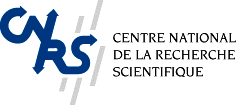
Observational Cosmology: A Cluster of Galaxies at High Redshift
Credit: Image courtesy of M. Gladders and H. Yee (University of Toronto)

The exact cosmological parameters
describing the shape and evolution of the Universe we live in are not
well known yet. A detailed understanding of these parameters requires
the study of objects at large distances. Unfortunately, individual
galaxies are difficult to study in detail at large distances or
equivalently at high redshift.
In our Galaxy, clusters of stars are known, for example
NGC 2244 (CFHT image of the week of January 31st). On a much
larger scale, clusters of galaxies also exist. They are the most
massive gravitationally bound entities known in the Universe. Although
they are rare, they are fairly luminous and have turned out to be
extremely useful to study our Universe in great detail. Analyzing the
number and distribution (in richness, or equivalently mass) as a
function of distance of these clusters sets precise constraints on
several cosmological parameters.
Large areas of the sky have been covered in the past in the course of,
for example, the CNOC2
survey (Canadian Network for Observational Cosmology) at CFHT. Yet
even this survey is only 1/66th the size of a new survey now underway
at CFH. This new effort, named the Toronto Red-Sequence Cluster
Survey, is designed specifically to find galaxy clusters, and hence
measure the cosmology. In this week's image the candidate cluster "CL
1620+2929" from this survey is featured. It is likely at a redshift of
z=0.9. This survey is being completed using the new CFH12K
camera; without such a powerful instrument, a survey of this size
is simply not feasible.
Technical description:
This image has been constructed from deep V, R
and z' data acquired in July 1999 at the Canada-France-Hawaii
Telescope with the CFH12K camera. These images are deep, with
magnitude limits roughly 24, 25.5 and 26 in z', R and V respectively.
Objects that are "blue"("red") (i.e., brighter in the V-filter (z' filter)) appear in blue (red) on the
image. The seeing on the smoothed combined images
is about 0".9. The image is centered on the cluster core, at full
pixel sampling, with some smoothing to bring all 3 filter PSFs into
rough alignment. The image is 800x800 pixels (a tiny fraction of
CFH12K's field of view) - at 0".206 / pixel this translates to 165x165
arcsec, or 0.85x0.85 h-1 Mpc.
More
on this survey program at the University of Toronto.



